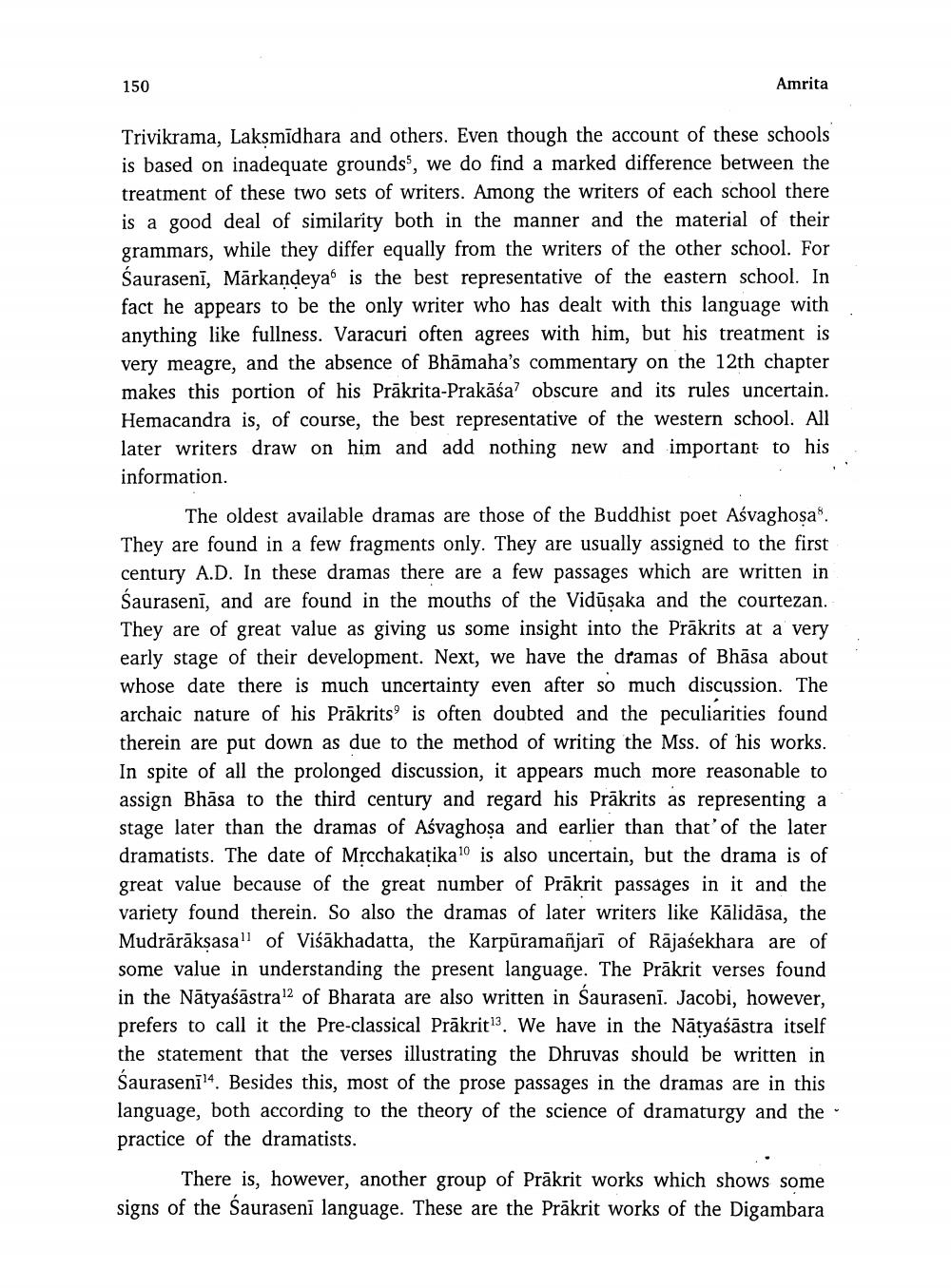________________
150
Amrita
Trivikrama, Laksmīdhara and others. Even though the account of these schools is based on inadequate grounds, we do find a marked difference between the treatment of these two sets of writers. Among the writers of each school there is a good deal of similarity both in the manner and the material of their grammars, while they differ equally from the writers of the other school. For Saurasenī, Mārkandeya is the best representative of the eastern school. In fact he appears to be the only writer who has dealt with this language with anything like fullness. Varacuri often agrees with him, but his treatment is very meagre, and the absence of Bhāmaha's commentary on the 12th chapter makes this portion of his Prākrita-Prakāśa? obscure and its rules uncertain. Hemacandra is, of course, the best representative of the western school. All later writers draw on him and add nothing new and important to his information.
The oldest available dramas are those of the Buddhist poet Aśvaghosa. They are found in a few fragments only. They are usually assigned to the first century A.D. In these dramas there are a few passages which are written in Śaurasenī, and are found in the mouths of the Vidūsaka and the courtezan. They are of great value as giving us some insight into the Prākrits at a very early stage of their development. Next, we have the dramas of Bhāsa about whose date there is much uncertainty even after so much discussion. The archaic nature of his Prākrits' is often doubted and the peculiarities found therein are put down as due to the method of writing the Mss. of his works. In spite of all the prolonged discussion, it appears much more reasonable to assign Bhāsa to the third century and regard his Prākrits as representing a stage later than the dramas of Ašvaghosa and earlier than that' of the later dramatists. The date of Mrcchakatika10 is also uncertain, but the drama is of great value because of the great number of Prākrit passages in it and the variety found therein. So also the dramas of later writers like Kālidāsa, the Mudrārāksasa" of Viśākhadatta, the Karpūramañjarī of Rājasekhara are of some value in understanding the present language. The Prākrit verses found in the Nātyaśāstral2 of Bharata are also written in Saurasenī. Jacobi, however, prefers to call it the Pre-classical Prākrit13. We have in the Nātyaśāstra itself the statement that the verses illustrating the Dhruvas should be written in Saurasenī?4. Besides this, most of the prose passages in the dramas are in this language, both according to the theory of the science of dramaturgy and the practice of the dramatists.
There is, however, another group of Prākrit works which shows some signs of the Saurasenī language. These are the Prākrit works of the Digambara




